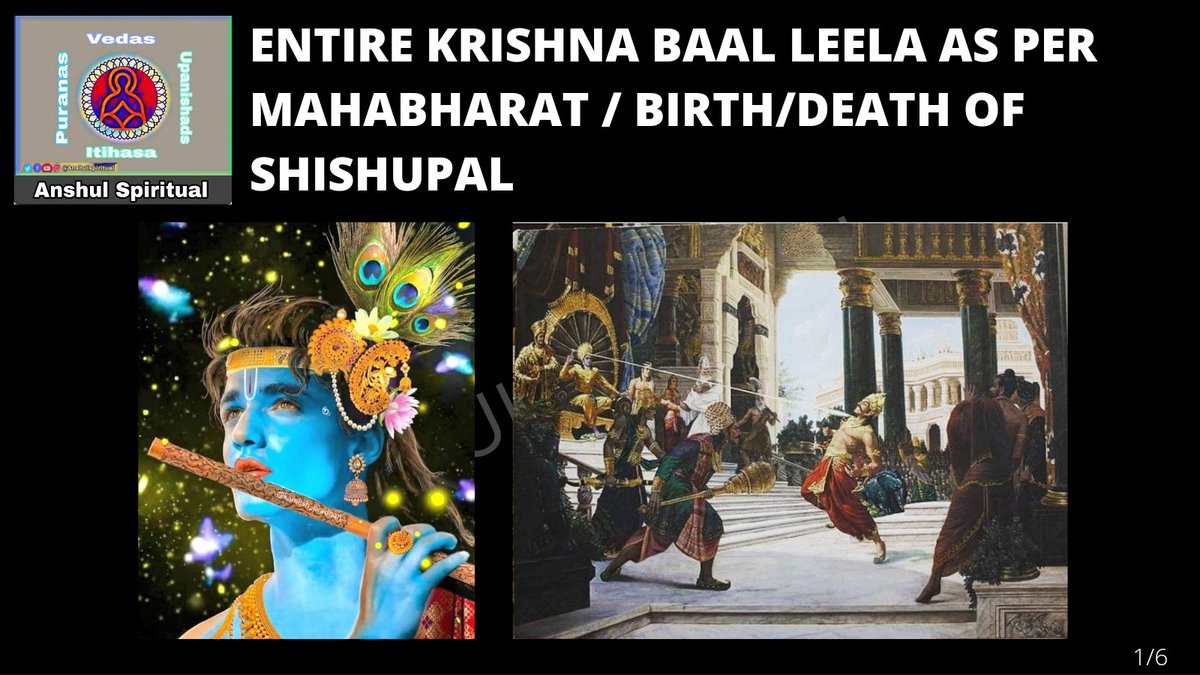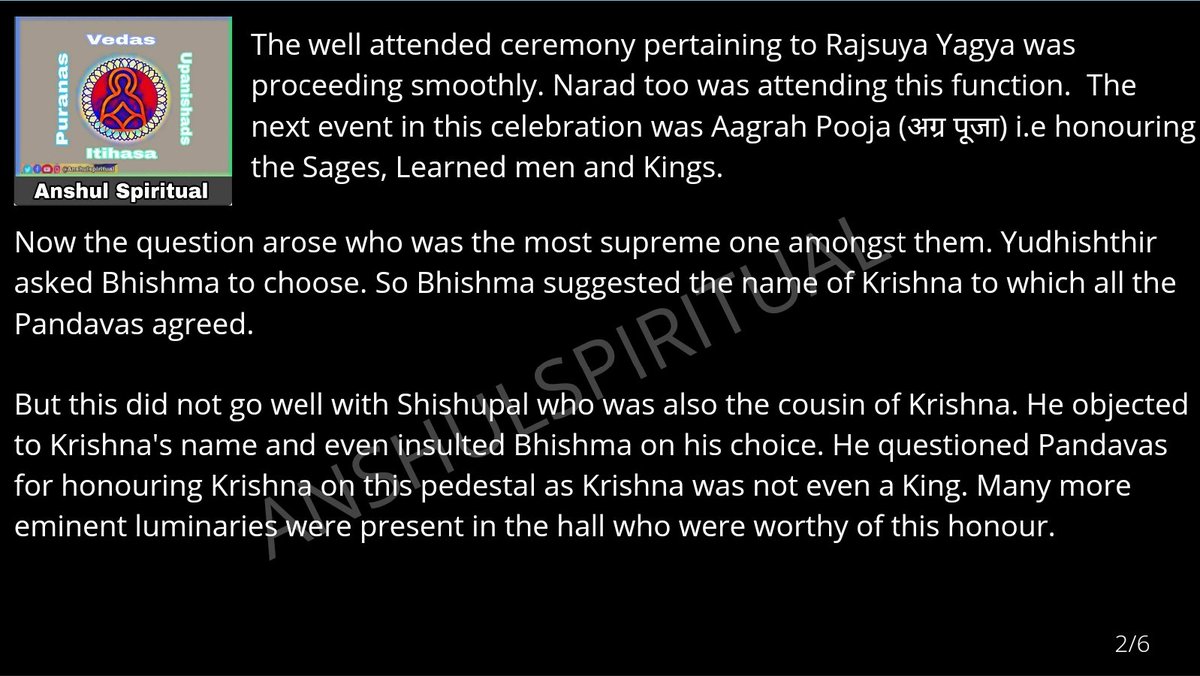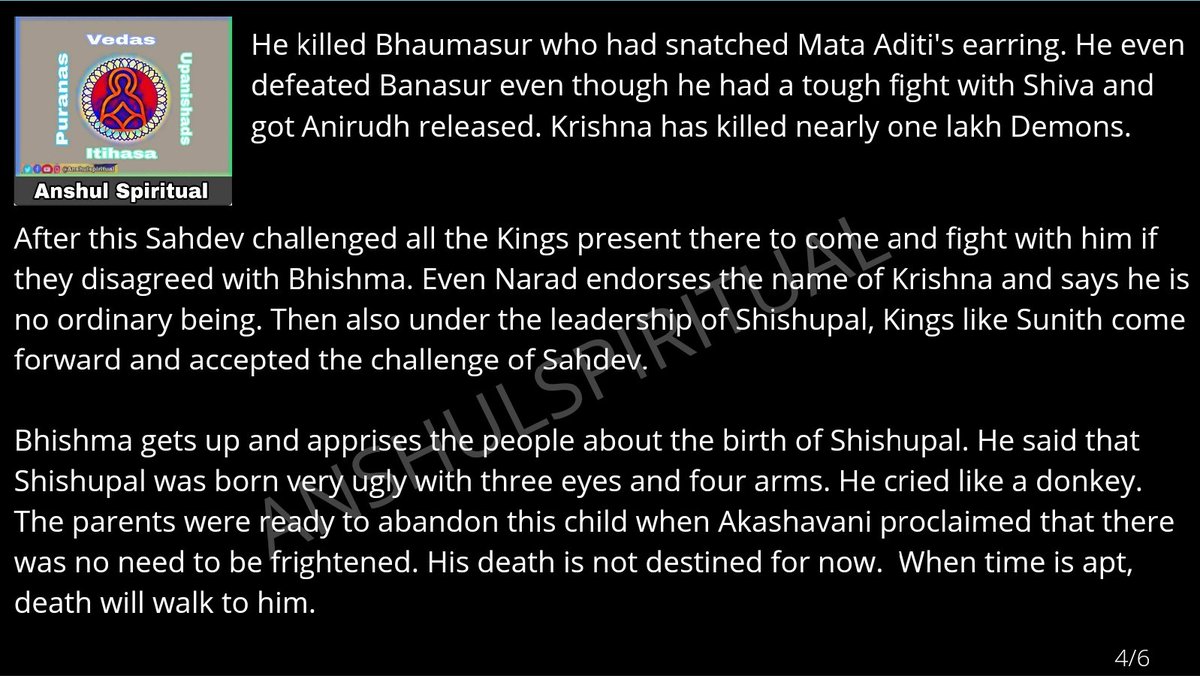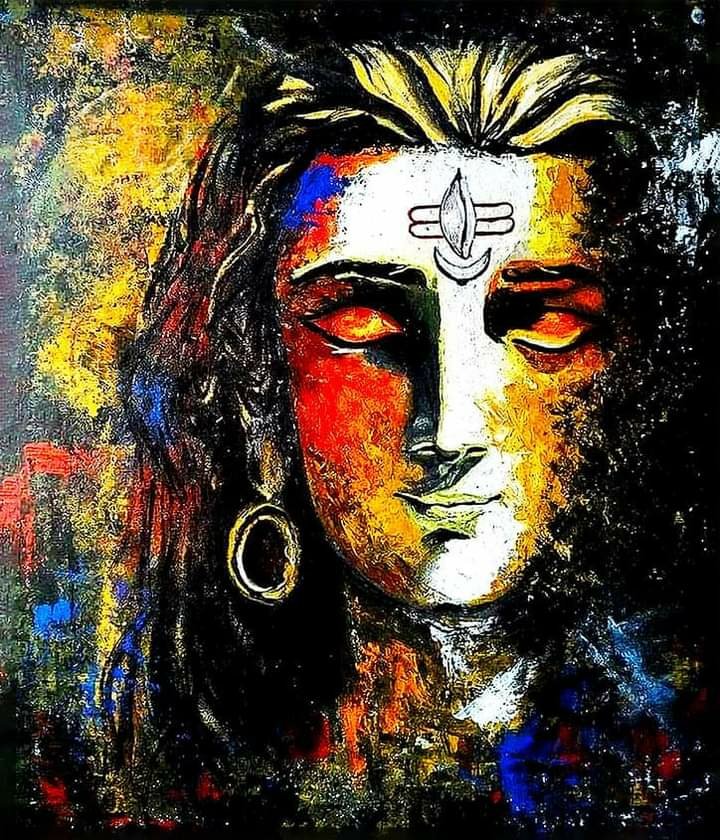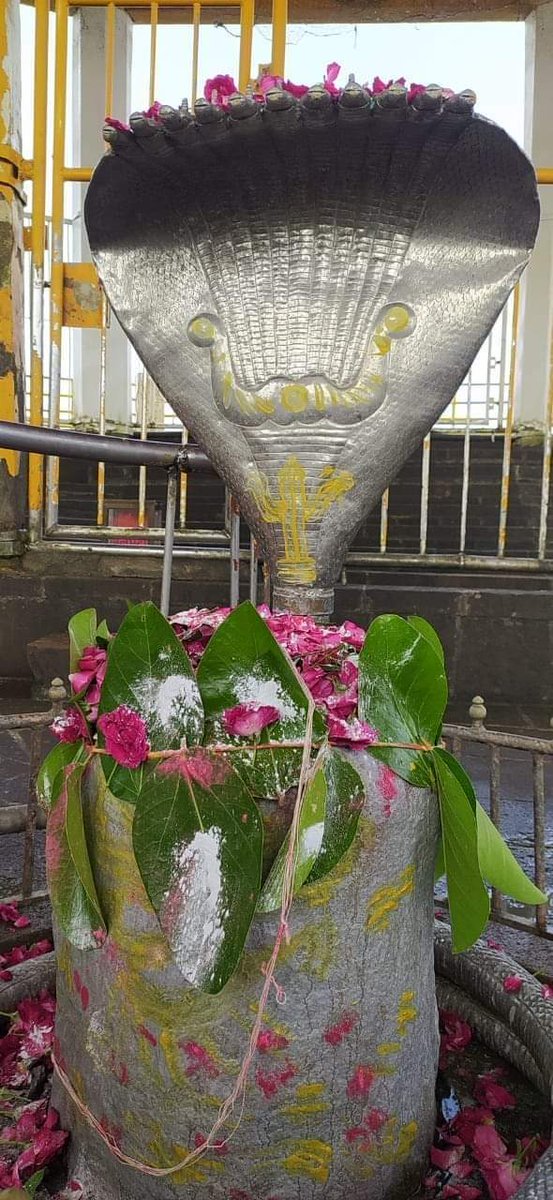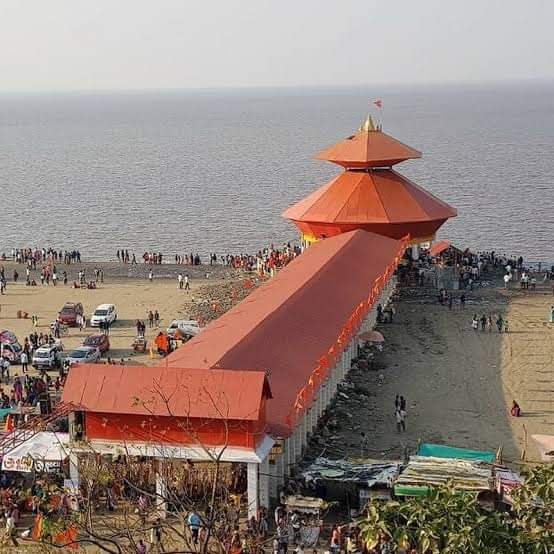2/9
Rig Ved 1.36.7
To do a Namaskaar or bow before someone means that you are humble or without pride and ego. This means that we politely bow before you since you are better than me. Pranipaat(प्राणीपात) also means the same that we respect you without any vanity.
1/9
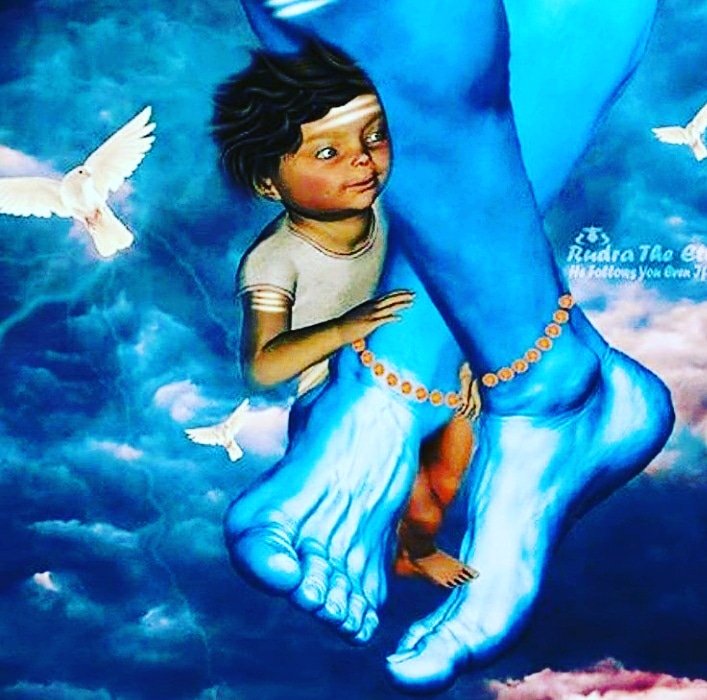
2/9
3/9
होत्रा॑भिर॒ग्निं मनु॑षः॒ समिं॑धते तिति॒र्वांसो॒ अति॒ स्रिधः॑॥
Translation :
नमस्विनः - To bow.
स्वराजम् - Self illuminating.
तम् - His.
घ ईम् - Yours.
इत्था - This way.
उप - Upaasana.
आसते - To do.
स्त्रिधः - For enemies.
4/9
मनुषः - Yajman.
होत्राभिः - In seven numbers.
अग्निम् - Agnidev.
समिन्धते - Illuminated on all sides.
Explanation : Yajmans bow(do Namaskaar) before self illuminating Agnidev by making the offerings of Havi.
5/9
Deep meaning: To do a Namaskaar or bow before someone means that you are humble or without pride and ego. This means that we politely bow before you since you are better than me.
6/9
7/9
8/9
https://t.co/lN9gaoTnBj
Instagram link👇
https://t.co/V5RODQuCio
Facebook link👇
https://t.co/tipsBG750e
#RigVedPositivity
9/9
https://t.co/HW0hVRCzCl
\u0939\u092e \u0928\u092e\u0928 \u0915\u0930\u0924\u0947 \u0939\u0948 \u0915\u093f \u0906\u092a \u0939\u092e\u0915\u094b \u0906\u0924\u094d\u092e\u0938\u093e\u0924 \u0915\u0930\u0947\u0902,\u0909\u0938 \u0932\u093e\u092f\u0915 \u092c\u0928\u0947\u0902\u0964 \u0939\u092e\u093e\u0930\u0947 \u0935\u093f\u0915\u093e\u0930\u094b\u0902 \u0915\u093e \u0924\u094d\u092f\u093e\u0917 \u0939\u0940 \u0928\u092e\u0938\u094d\u0915\u093e\u0930 \u0939\u0948, \u0938\u092e\u0930\u094d\u092a\u0923 \u0915\u0930\u0928\u093e \u0939\u0940 \u0928\u092e\u0938\u094d\u0915\u093e\u0930 \u0939\u0948\u0964 \u0907\u0938\u0940\u0932\u093f\u092f\u0947 \u0905\u0928\u0941\u0937\u094d\u0920\u093e\u0928 \u0915\u0947 \u092a\u0939\u0932\u0947 \u0914\u0930 \u0905\u0902\u0924 \u092e\u0947 \u092f\u0939\u0940 \u092a\u094d\u0930\u093e\u0930\u094d\u0925\u0928\u093e \u0915\u0930\u0924\u0947 \u0939\u0948\u0902\u0964@Anshulspiritual
— \u092a\u0902\u0921\u093f\u0924 \u0935\u093f\u0936\u093e\u0932 \u0936\u094d\u0930\u094b\u0924\u094d\u0930\u093f\u092f (@VishalS50533075) December 26, 2020
More from Anshul Pandey

https://t.co/64r7BmTN6N

https://t.co/vwg4NFMYgy

https://t.co/CtFXR0TNrx

Instagram link👇
https://t.co/0E8eGSiUmr
Facebook link👇
https://t.co/j1XLUq4oBM
#InspiredBySwamiAnjaninandanDass
#MahabharatPositivity - Sabha Parva
More from Religion
A lot of things Muslims do now and claim as Islamic rule is actually a culture that Islam curtailed or tried to perfect.
— Sule Nana (@izesule) January 2, 2021
Let's talk polygamy.
Islam didn't come and say, "oh men, marry four wives"
No.
Polygamy was in existence, long before the coming of Islam.
1. First off, a disclaimer. Should you feel hurt by my words in the course of the thread, then forgive me. It’s from me and not from Islam. And I probably have to improve on my delivery. And I may not quote you verbatim, but the intended meaning would be there. Thank You!
2. Standing on Imam Shafii’s quote: “And I never debated anyone but that I did not mind whether Allah clarified the truth on my tongue or his tongue” or “I never once debated anyone hoping to win the debate; rather I always wished that the truth would come from his side.”
3. Okay, into the meat (my love for meat is showing. Lol) of the thread. Even though you didn’t mention the verse that permitted polygamy, everyone knows the verse you were talking about (Q4:3).

4. Your reasons for the revelation of the verse are strange. The first time I came across such. I had to quickly consult the books on the exegeses or tafsir of the Quran written by renowned specialists!




